Made with China – The Professionalization of Make
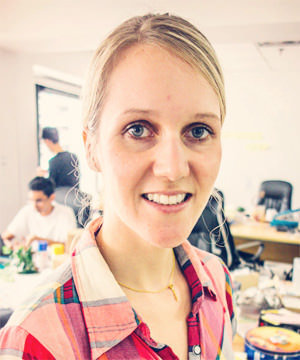 About the Author: Silvia Lindtner is post-doctoral Fellow at ISTC and Fudan University. She researches and writes about DIY Maker culture in China. She is currently based in Shenzhen exploring how Chinese manufacturing comes together with IoT start-up culture.
About the Author: Silvia Lindtner is post-doctoral Fellow at ISTC and Fudan University. She researches and writes about DIY Maker culture in China. She is currently based in Shenzhen exploring how Chinese manufacturing comes together with IoT start-up culture.
Since January 2013, I have been based out of Shenzhen, a city in the southern region of China, bordering Hong Kong, and most widely known as the home to factories such as Foxconn, where firms like Apple and HP manufacture their products. What brought me to Shenzhen was a new project, part of my long-term ethnographic research on maker and hackerspace culture in China: alongside 10 hardware start-ups, I joined as an on-site ethnographer the HAXLR8R program. HAXLR8R is the first of a growing number of hardware focused accelerator and incubator programs that invest in start-ups born out of the open hardware and maker movement.
The 10 start-ups I have been working with over the last months in Shenzhen and programs like HAXLR8R play a central role in what I call an increasing “professionalization of Make.” By this, I refer to a growing number of start-ups and individual makers that are working towards economic models that allow them to make a living off their hardware designs and productions. In this post, I explore what actually goes into this professionalization of maker practice, which is mostly thought of as a hobbyist activity and something that people do in their free time or just for fun. What does it take to professionalize make? I will show that at the center of this transformation lies the establishment of partnerships between people and entities we previously thought of as populating quite distinct or even opposing worlds.
Made with China I: LightUp
LightUp was founded by Josh Chan and Tarun Pondicherry with the vision to apply maker and open hardware techniques to education and enable hands-on learning. A central aspect that motivated Josh and Tarun is a commitment to open up the black-box of technology. By this, they mean to uncover the inner workings of our technology. For instance, they ask what makes a “closed” device such as an Apple iPhone “tick,”e.g. what materials and components were used, where it was made, what it does in terms of electronics and physical materials, _etc. _With this, Josh and Tarun speak to a broader vision that motivates many of those who identify as part of a contemporary maker movement: individual and collective empowerment through the building of platforms that allows others to make and understand the inner workings of technology; or in their words:
“… as these devices have shrunk over the decades, they’ve become inaccessible black boxes. We live in a world where we can only use electronics, but not understand, fix, remix, or create. At LightUp, we aim to tear open those black boxes and help create the makers of tomorrow.”
With their LightUp system Josh and Tarun are driven to implement in practice this vision of un-black boxing technology and what it means to do that via an out-of-the-box designed artifact. The goal of LightUp is enable young people to playfully approach the complex workings of physics and electronics via a tangible system. It consists of electronic components (wire, bulb, motor, microcontroller, etc.) mounted on blocks that connect to each other magnetically to form circuits. A central aspect of the LightUp system is not only the design of these electronic components and of the magnetic enclosures, but also the design of a corresponding software system. Josh and Tarun describe this software layer of the LightUp system as an “informational lens” – a mobile application that recognizes the components in the magnetic circuit system a user puts together and then augments the image with visualizations of otherwise invisible circuit behavior. The application visualizes, for instance, if the circuit was put together correctly and current is flowing through.
Over the last years, scholars, educators and politicians alike have paid increasing attention towards “maker” practice as a new form of education that enables innovation and creativity through hands-on learning. For instance, in 2012, DARPA announced to fund an educational program aimed at bringing “the practices of making into education and [to] extend the maker movement into schools” with a target of reaching 1,000 schools by the school year of 2012-13 (the announcement, the controversy). Similarly, in 2011, the Chinese government, announced the funding of 400 hackerspaces in Shanghai to support new forms of learning, creativity and innovation (Lindtner and Li 2012). And also in higher education, many programs – ranging all the way from the MIT Media Lab to Information and Management schools – have opened up hacker and/or maker spaces providing their students with access to a new set of tools and collaborative learning.
The work by Josh and Tarun is indicative of how this vision is being implemented in practice. During their time at HAXLR8R, LightUp visited a series of factories and established close relationships with a selected few that they deemed fitting their quality requirements, specifications, and style of interaction and communication. One of these manufacturing partners produced small enclosures of LightUp prototype. Josh and Tarun were working closely with their production site in Shenzhen. The interaction involved an intricate and effortful interaction between LightUp, the manufacturing site and the service provider that had established the bridge between the foreign start-up and the Chinese manufacturing site. A particularly important aspect to these interactions were on site visits, during which Josh and Tarun met with the Laoban (the factory owner) as well as with workers on the factory floor to test the appropriate materials to be used for their product:
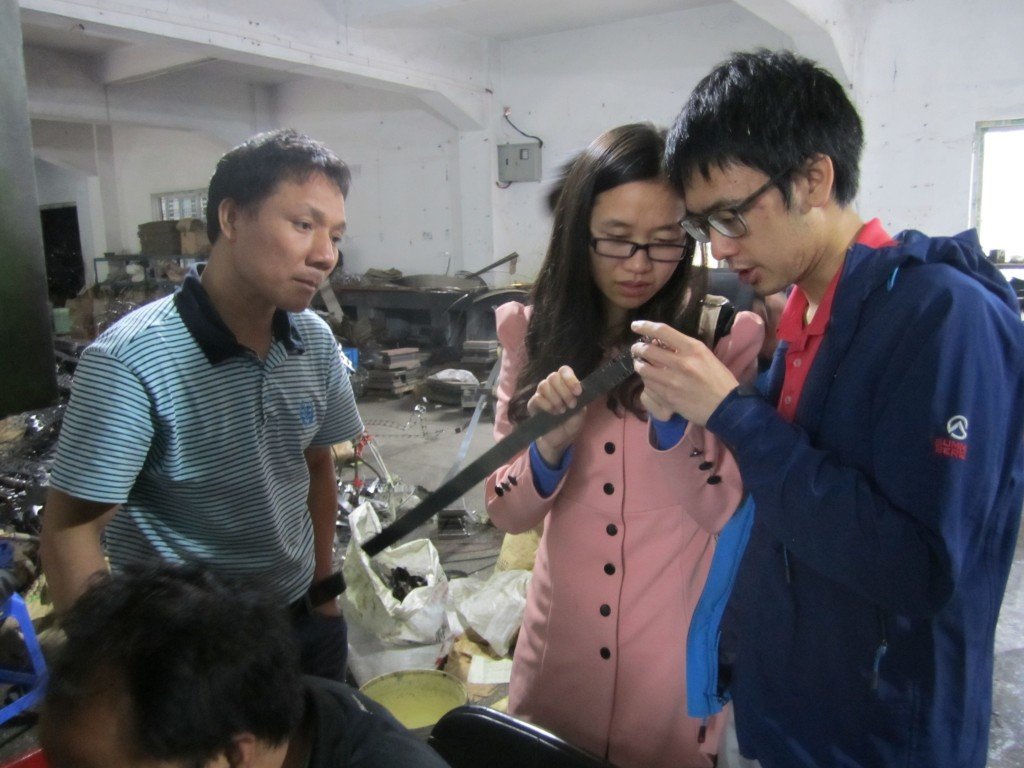
Discussing the materials

Adjusting stamp
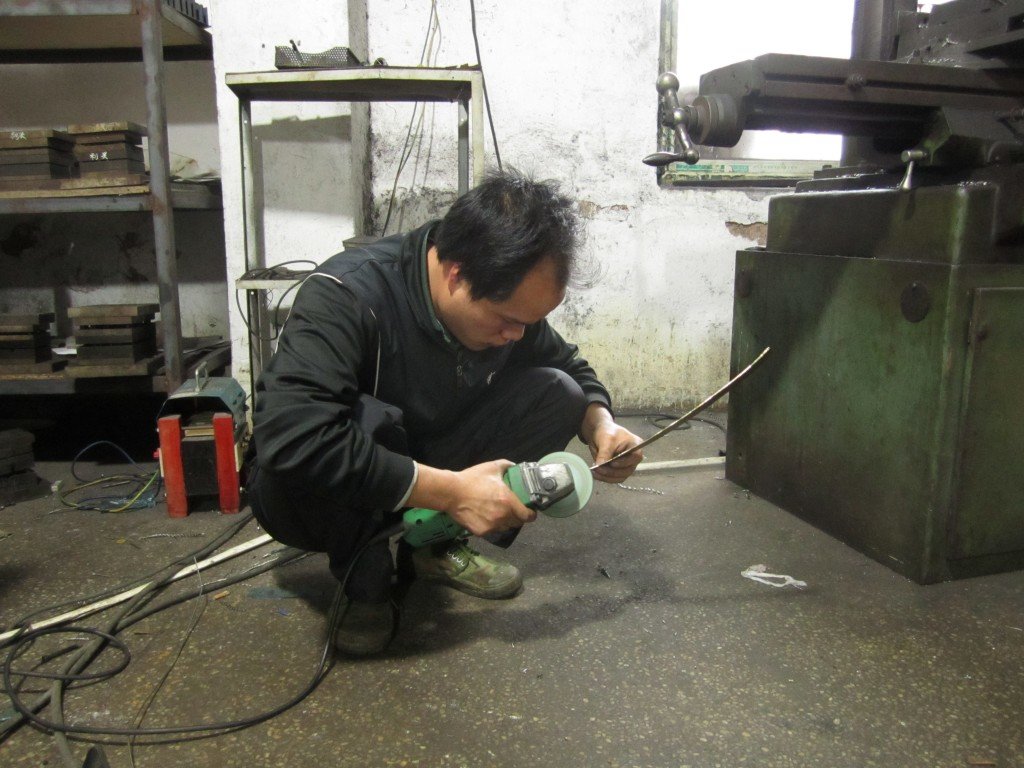
Cutting copper
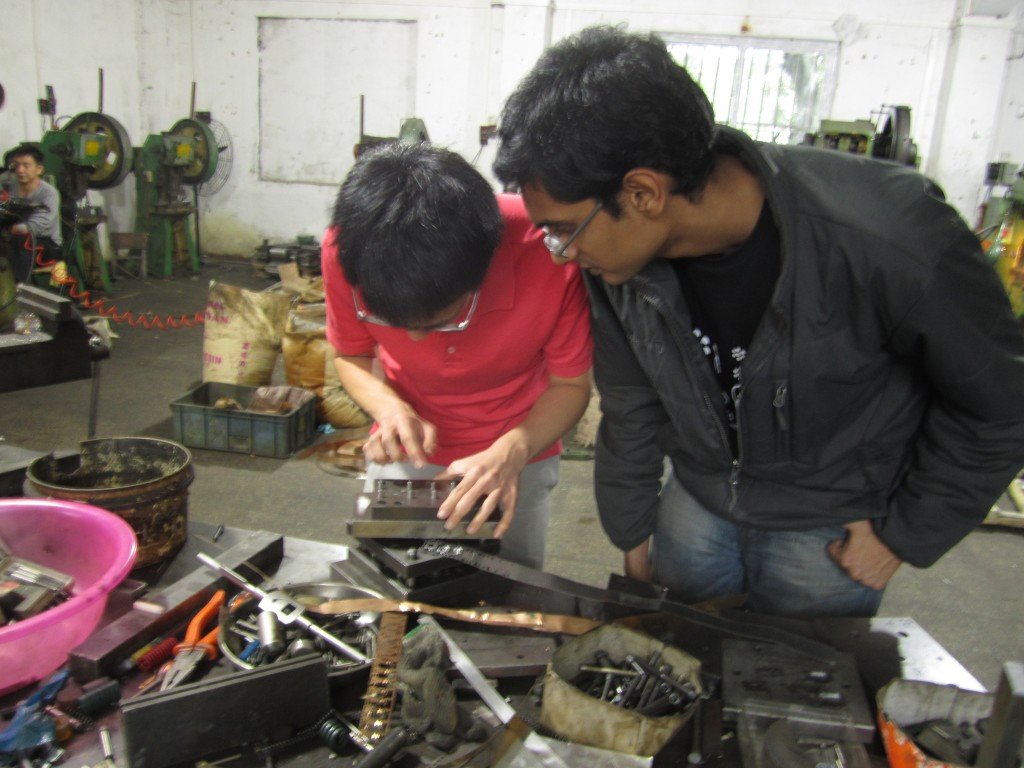
Figuring out the problem with the mold
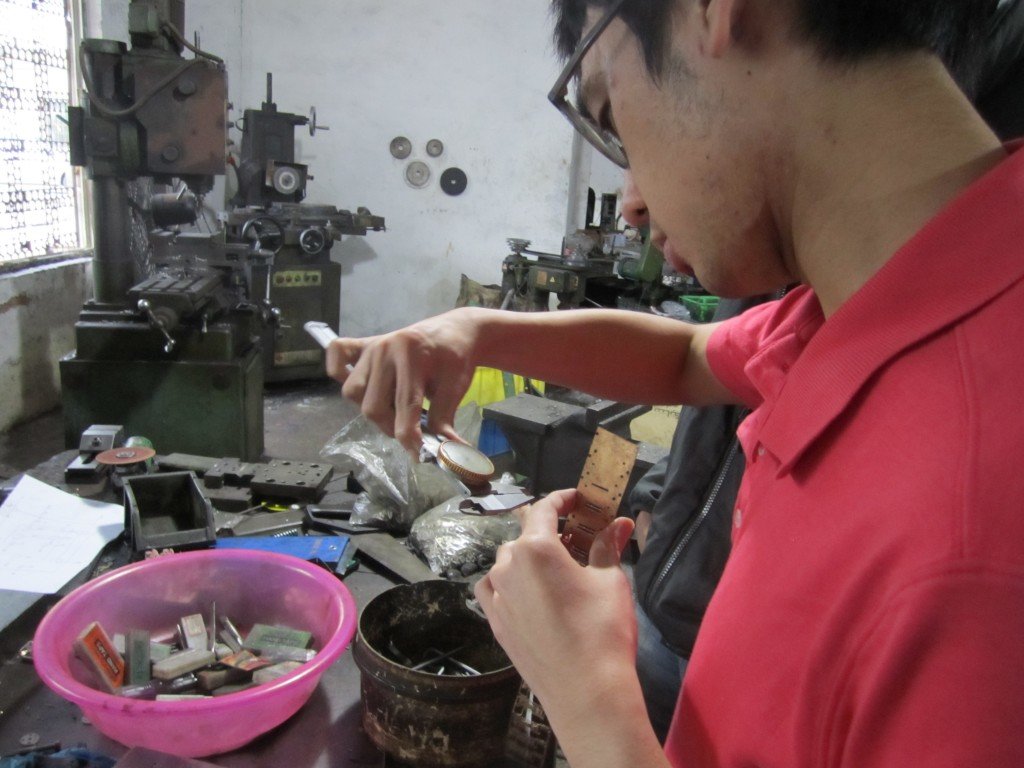
Measuring cap size

Stamping test
During one such visit I accompanied Josh and Tarun and we met with the workers to test several different materials to be used to stamp on the small scale the LightUp system required. After several hours of trial and error, the manufacturer and LightUp decided to consult with the subcontractor that manufactured the mold for the stamp. A phone call later, the worker who had produced the mold stood in the office and we agreed that modifications had to be made to the mold design itself. The interactions spanned beyond this on-site visit over another 2 weeks.
It is exactly this careful interaction as well as the establishment of trust between the hardware startup and the owner and workers at the factory that turns maker ideas into tangible products. It’s a combination of a deep understanding of materials, the inner workings of technology and social interactions.
Made with China II: Have you seen Clyde?
“Clyde is a bit of a character,” Amanda explains in the Kickstarter video that introduces Clyde, the first of a product line of modifiable and open household appliances by Fabule Fabrications. What Amanda and Bruno realize with Clyde is an expressive and personable take on what designers and engineers have envisioned for more than 2 decades as the so-called smart home. This vision of a smart home with interconnected devices that make our lives easier and frees us from household chores dates back to the 90s. Back then, the advent of mobile computing and sensing technologies lead people to envision an invisible computer moving into the background of our lives and connecting seamlessly our lives at home, in the office and while on the go. What we learned over the years is that much of this remained a vision and that in practice most people prefer warm and customizable environments rather than full-on home automation. Recently, we have seen a resurgence of these earlier ideas of the smart and interconnected home with the Internet of Things. A central difference is that much of what was envisioned 10-20 years earlier today has become possible to implement in practice. One reason is simply that electronic components have continued to shrink in size and price. More importantly than the change in technical feasibility is what a growing community of makers like Amanda and Bruno are making in practice.
With Clyde, Fabule Fabrications illustrates that we can implement earlier visions of interconnected devices, but do so with a personable touch, with character and by engaging and working WITH the consumer, rather than designing a sterile and automated home FOR people. With a background in interaction design, Amanda and Bruno are well versed in designing devices that have a delightful and quirky personality. The process was driven by humor and playfulness, for instance what would a household lamp look like that reacts to your plant needing water or that greets you when you come from a long day of work? Or that gets sleepy when you have been working for 2 hours straight at your desk and you really should be taking a break?
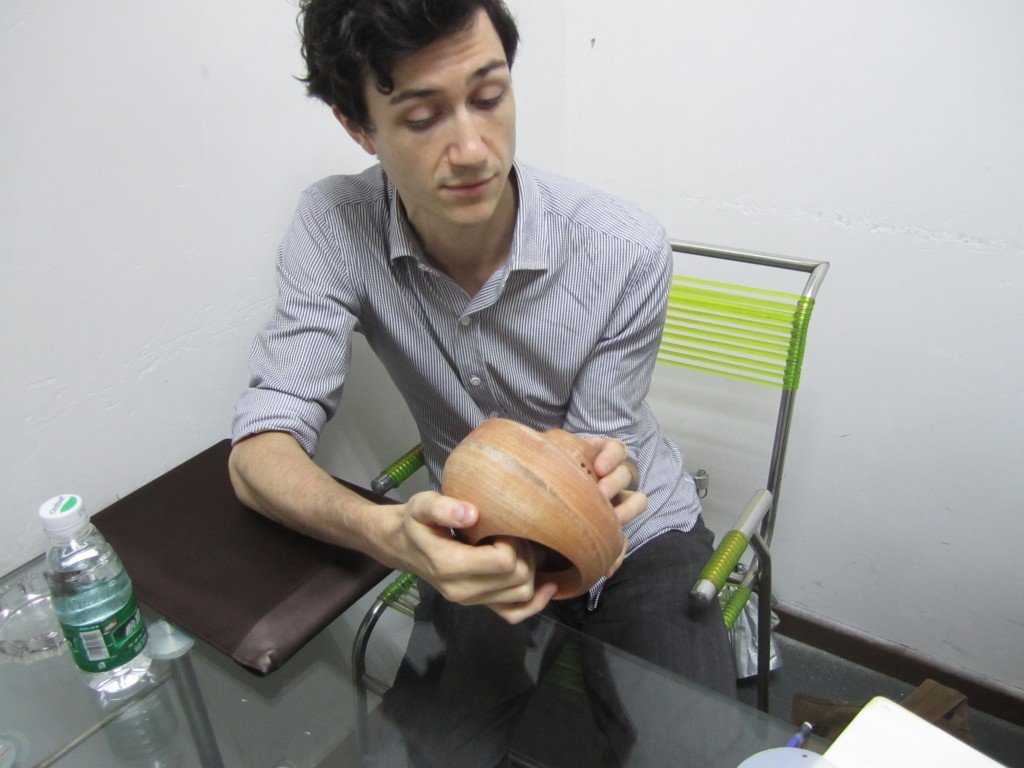
Feeling the wooden version of Clyde
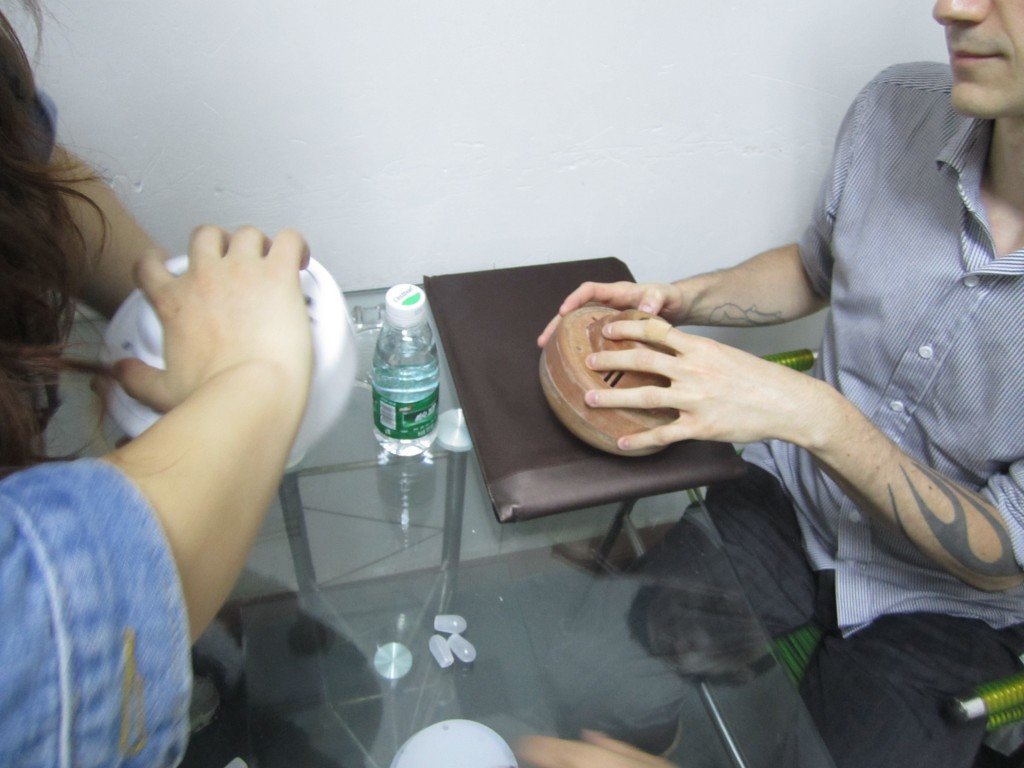
Plastic versus wooden enclosure, discussing different opening mechanisms of the lamp
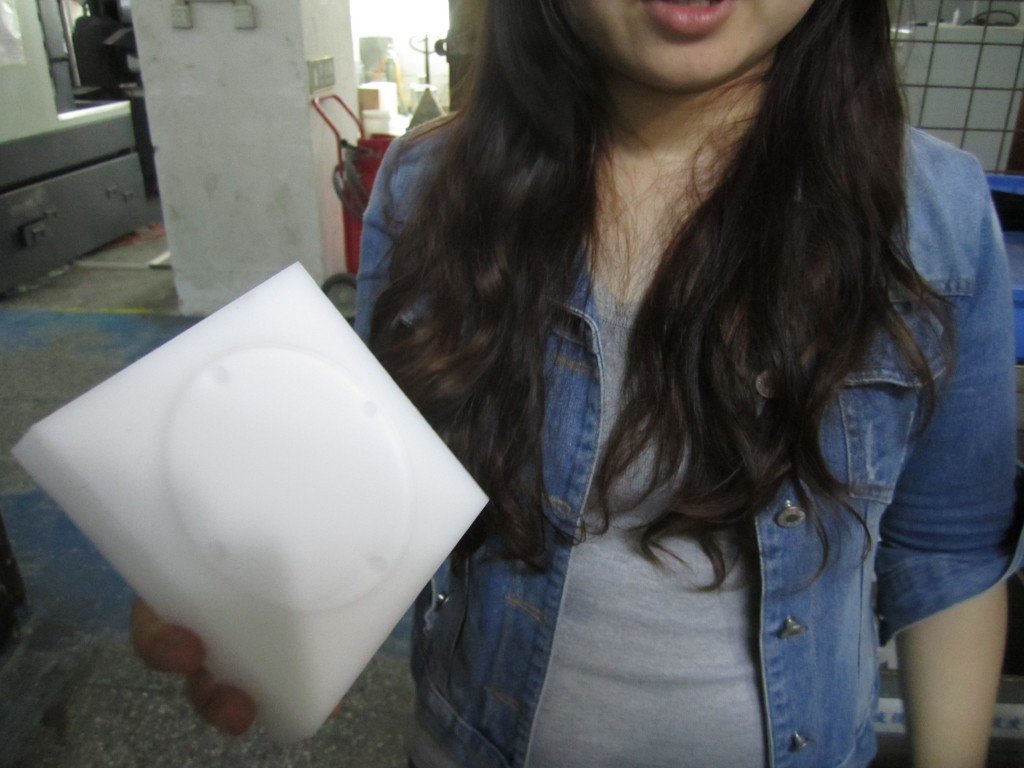
Silicon mold
This humor that Amanda and Bruno designed into Clyde is central to the maker community. This playfulness and humor also extended in Fabule’s interactions with manufacturers in China. During their time in Shenzhen, they worked closely with the prototype manufacturer Industri-Man. They worked in particular with a young women and recent college graduate Ada Liu from the foreign trade department of Industri-Man. Through a series of interactions through email, phone and on-site visits, Fabule and Industri-Man discussed intricacies to the material requirements of the best plastic to be used as well as how to best engineer the snap-and-twist joining mechanism that Bruno designed for the lamp. Together with Industrial Man, Fabule Fabrications designed a vacuum cast that’s very close to the final injection mold to be used for the finished product. Clyde, then, comes into being not by the tools and materials of one single, but of many different entities and manufacturers with a distinct focus on specific machines, materials, and products. Large corporations such as Intel and Apple often work with contract manufacturers that handle for them the different sub-contract manufacturers and take care of the quality assurance, etc. Start-ups like Fabule Fabrication, especially when in the early stages of prototyping, work directly with smaller scale and specialized manufactures, and then are themselves responsible for quality assurance and putting together the different components into a final put-together product. For instance, in addition to Industri-Man, Fabule Fabrications also worked with Hill Optical to design the heat dissipation from the high-power LEDs that give Clyde parts of his personality. The collaboration with Hill Optical prompted Fabule to change the bottom portion of the lamp to aluminum (from plastic), and add some ridges on the inside to create additional heat dissipating surface area.
What this shows is that makers, manufacturers, and VCs are invested in the “professionalization of make,” while approaching it from very different positionality in terms of resources, power and knowledge. They have a stake in each other’s success and by recognizing each other as collaborators working towards a mutual goal, they alter the very way industrial production, business collaboration as well as design is done. These partnerships in design and ideation between makers, manufacturers and VCs is better characterized as a “made with China” (rather than made in China), a process of mutual learning, investment of resources and trust.